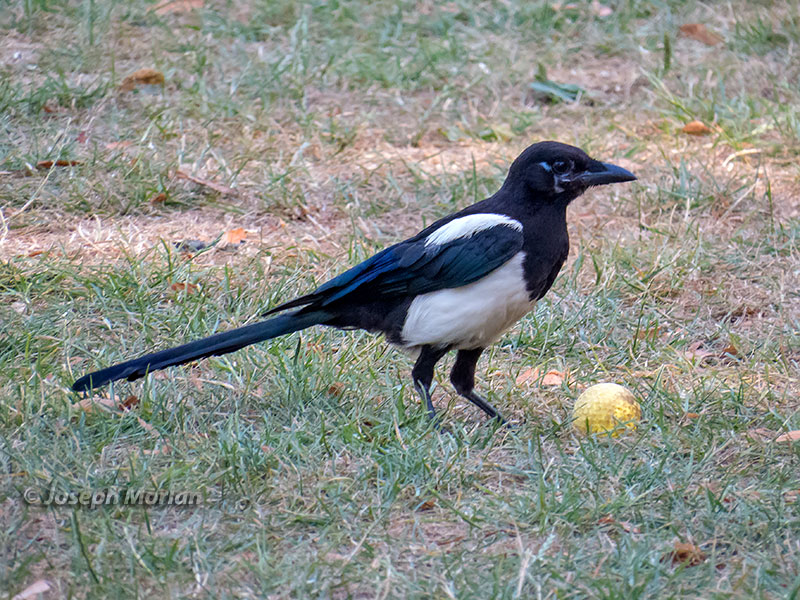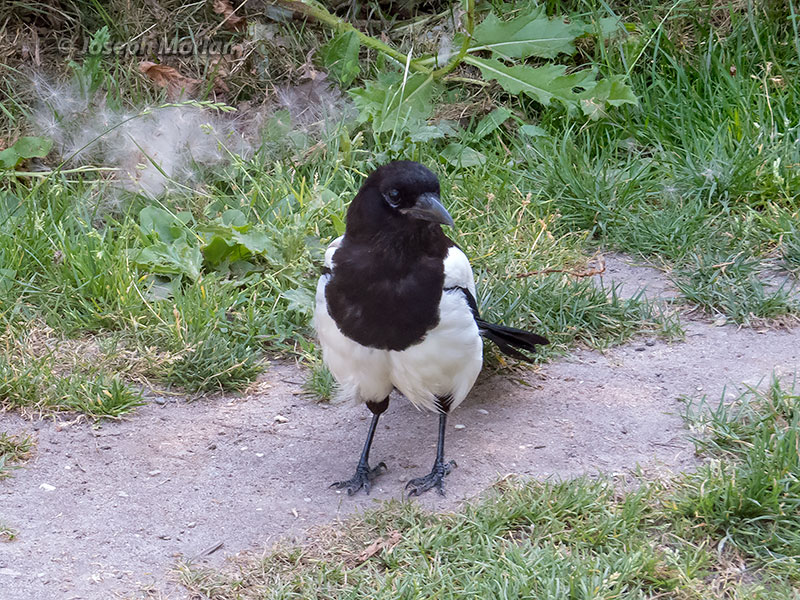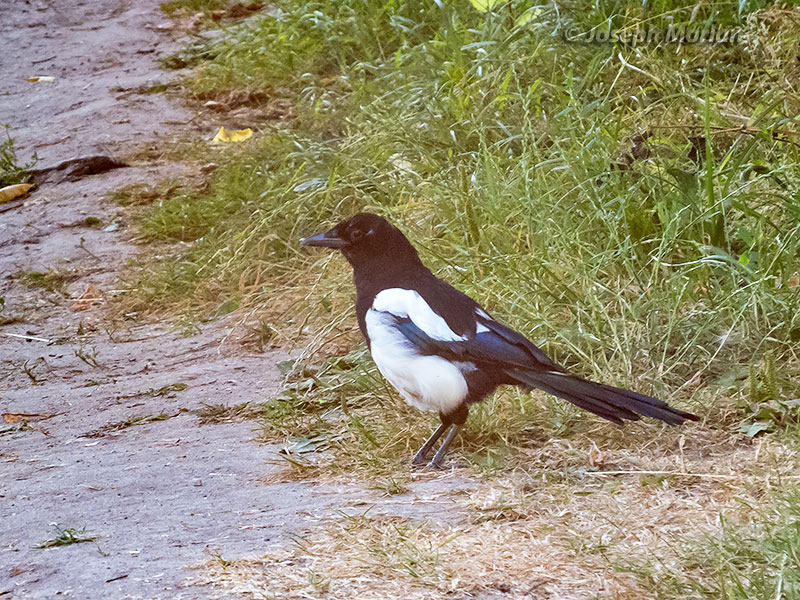


This individual seemed fixated on a stray yellow golf ball which it carried around, dropping it and picking it up again. This flamboyant corvid, formerly included with the Black-billed Magpie (P. hudsonia) of Western North America is now split as a separate species based on differences in genetics, vocalizations and social behavior. North American birds average longer tailed, but have less white in their wings. Genetic studies found that the California endemic Yellow-billed Magpie (P. nuttalli) is genetically closer to Black-billed Magpie than either is to Eurasian Magpie Pica pica which is now further split into five species, following a recommendation by Song et al. 2018). Magpies are highly social, living in loose colonies. Nests are large twig structures which are domed over on the top and have a hole in the side. The small blue mark under the eye, is bare skin. During head molt, additional areas of blue or blue-gray skin may be displayed, sometimes forming an almost complete eyering. Canon SX50 HS PowerShot.
References:
Madge, S., Christie, D.A. & Kirwan, G.M. (2018). Eurasian Magpie (Pica pica). In: del Hoyo, J., Elliott, A., Sargatal, J., Christie, D.A. & de Juana, E. (eds.). Handbook of the Birds of the World Alive. Lynx Edicions, Barcelona. (retrieved from https://www.hbw.com/node/60753 on 17 August 2018).
Song, G., Zhang, R., Alström, P., Irestedt, M., Cai, T., Qu, Y., Ericson, P.G.P., Fjeldså, J. & Lei, F. (2018) Complete taxon sampling of the avian genus Pica (magpies) reveals ancient relictual populations and synchronous Late-Pleistocene demographic expansion across the Northern Hemisphere. J. Avian Biol.49(2): https://doi.org/10.1111/jav.01612.
Trost, Charles H.(1999).Black-billed Magpie (Pica hudsonia), The Birds of North America (P. G. Rodewald, Ed.). Ithaca: Cornell Lab of Ornithology; Retrieved from the Birds of North America: https://birdsna.org/Species-Account/bna/species/bkbmag